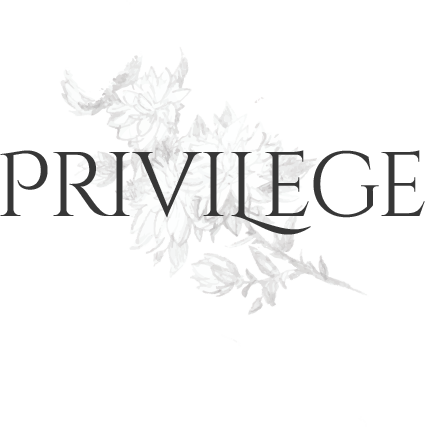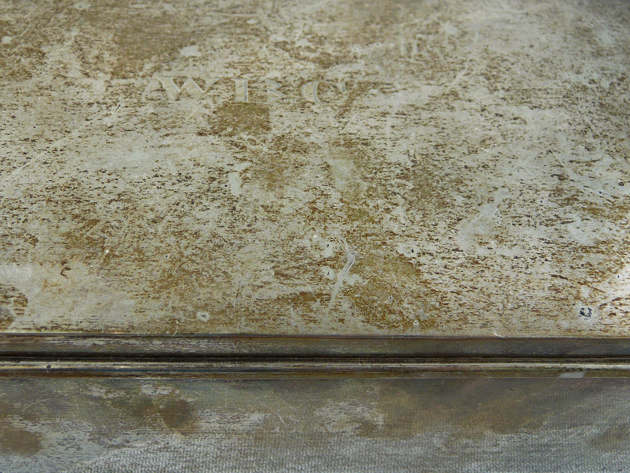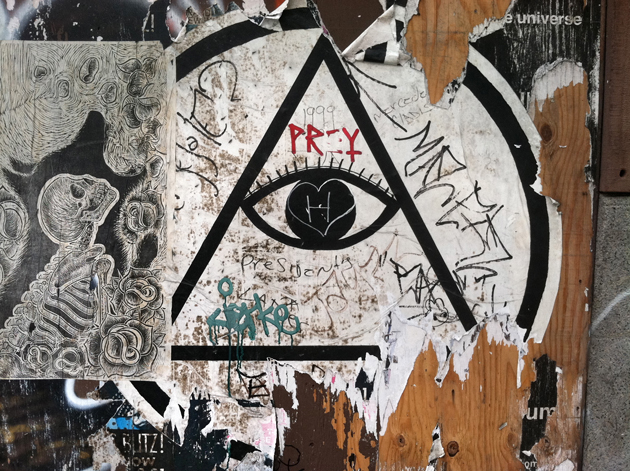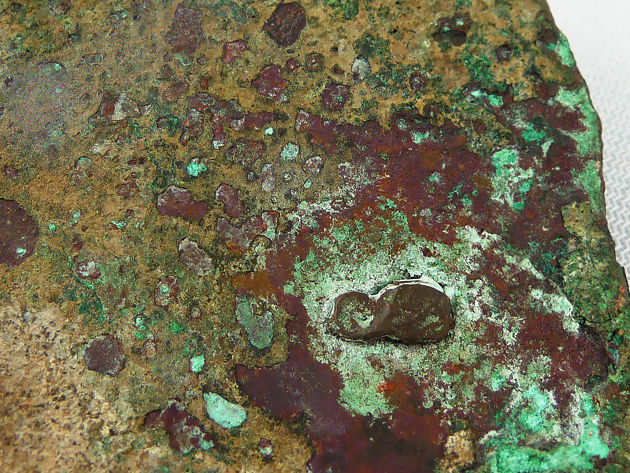Well hello everyone! I’m very happy to be back. I hope you’ve all had a lovely summer and are anticipating a glorious fall.
I’ve been happily stockpiling posts – of urban outfits, movies and literature from Professor C., rehearsal dinner dresses, earrings by Vicente Agor, a trip to Convict Lake, and all kinds of folderol. But as it happens, my return today coincides with an installment of the blogging endeavor known as BIO. Led by Marsha Harris of Splenderosa, each month the BIO style bloggers all publish on one topic. You’ll find them linked here.
Today we’re writing about Patina. We probably all know the technical meaning. But it’s also a model for how matter changes at the margin, in reaction to surrounding chemistry. So patina could serve as a metaphor for many phenomena – or just as a diversion, as the US returns to work after Labor Day. Nothing wrong with simple fun.
One might imagine a spectrum of similar surface reactions, just for the heck of it, and to see what makes patina, itself. For example,
Iridescence.
Brought by light, broken by edges or just time. For the just created and the soon to disappear. Ephemeral, elusive, with a Let’s Have All The Colors enthusiasm common to the young.
Tarnish.
Darkening over time. If it would just halt when asked, leaving the original surface still visible in relief. Unfortunately, tarnish progresses inexorably. Pull out the polish from the kitchen sink and get going. No guests without shine.
Palimpsest. (Edited to correct spelling as per, um, my son)
The most brutal instance. Here the original surface is scraped and written over into almost-invisibility. The result can be beautiful, but the first layer has no control over outcome. One should be able to surrender to change without disappearing.
Patina.
Pitted, greened, irregular. Chemically, isn’t this the most participatory, the most lasting, the most adaptive of responses? And as for metaphor? I’ll leave that to you all, oh exceptionally intelligent readers. Along with one of the most beautiful Google image searches I’ve ever happened upon.
See you again on Thursday, and Saturday, and so on as before.

Images
Patina, tarnish, mine.
Iridescence Iridescent Bubbles by Buzz Hoffman on Flickr.
Palimpset by wayneandwax on Flickr





23 Responses
Welcome back and thanks for sharing the wedding fun with us.
Gorgeous examples of patinas. So relevant to your entire blog somehow.
High WASPS have great access to the treasure that is patina.
Thanks Erin. I agree that patina might be a metaphor for 90% of what I write about:). But I didn’t want to hog the concept.
Love your take on Patina! Have a great day. Mona
Welcome back! Patina can not be given, it must be acquired over time.
xo
That last image is quite abstract and very beautiful . It looks like the base is copper.
Patina on arts and crafts copper is what collectors look for…unlike the tarnish that I must strive to keep off our family silver!
Happy to hear your “voice” again Lisa!
Welcome back! That is a lovely set of Google search images.
Welcome back! As I get older, the appeal of patina gets greater and greater!
Thank you for this lovely set of images. As a sculptor, I love forging bronze and while I do apply heat and chemical processes to create patina, the best ones develop naturally with age.
I was delighted to see, at the bottom of the Google images, one of Tamaki’s hand hammered buttons, on the ‘Made in Canada’ card. She makes her buttons out of salvaged brass and copper pipe. I bought one from her just yesterday, the design based on a cherry blossom petal. A beautiful, unique tiny piece of art for only $20. While I love the colour of copper, I’m looking forward to seeing the patina develop.
I love it that you are a sculptor, and that the search turned up a artist you know.
We’ve all found such different examples of patina…great post!
Catherine
Welcome back!
Hope your time away was as beautiful as this post.
Contrarian that you are, you have given us yet another brilliant concept of PATINA. And, I love it!
You have made us think outside the box, so to speak. I so appreciate your coming back from your honeymoon and posting with us today. Believe me, I know how difficult & time-consuming these posts can be. But, I also know how much they are appreciated and loved by so many. Welcome back, Lisa. We’ll talk soon.
Hello Lisa, I noticed how all of the changes that you list as building patina also make the surface more complex, and this complexity is what engages the mind while creating beauty for the eye. All of these changes also create a unique individuality, adding a further layer of complexity and appreciation.
–Road to Parnassus
Something I hadn’t even thought of, looking from inside out as I was. Thank you for the extra layer of meaning.
Beautiful images and a wonderful take on the topic.
Palimpsest. A fascinating subject in and of itself, especially when ghostly under painting leaves traces of a whole other visual story,
Um, I have to confess that I rather prefer my silverware in a tarnished state than all shiny…so that it looks old…having said that, it is great fun to polish it for the “oh look now” effect.
Love your take on patina…the brilliance of the complex….
A thought-provoking take on the topic — and wow! that is a delectable set of images, that Google search. I could disappear into those for hours . . .
Welcome back Lisa! Congagulations on your wedding! Throughout your blog hiatus I studied diligently your archive. By now I am convinced we’re soul mates!!!
I am thrilled to meet you. A big soul mate hello to you:).
Your gorgeous and thought-provoking post on patina most often brought out a child-like reaction in me: “Oooooh”–over and over again. :)
Thank you and congratulations on your wedding!
With all of my Best from Arles,
Heather
Very interesting post about patina, Lisa.
Interesting and certainly unique. Just love it!
Greetings from the Périgord, karin
Oh – Congratulations to your wedding, all my best wishes!
Welcome back, and I suspect that you have some metaphors in your head or you wouldn’t have mentioned the idea. I’m thinking of the patina that my face has acquired as it has aged. And for me, palimpsest is the most evocative, as I think about who I was and who I am now – not so much that layers have been scraped away as added, with those underneath still visible, although sometimes just barely.
And then there’s the thorny issue of how to pronounce the word Patina. As with everything else, it seems that an accent on the wrong syllable, or a failure to accentuate a certain syllable a certain way, or a misstep of nuance in the number of syllables can have disastrous results for social climbers.
YOU have been missed, welcome back to your desk!